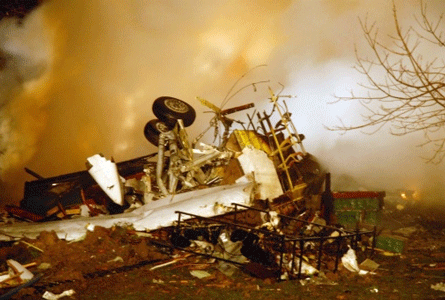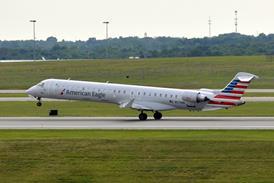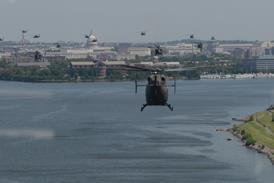Andrew Doyle/MUNICH
SAS Commuter last week temporarily grounded its Bombardier Dash 8 Q400 fleet and said it was suspending further deliveries of the 70-seat turboprop after technical problems caused a series of emergency landings.
Bombardier representatives met the carrier and engine-maker Pratt & Whitney Canada on 13 October to discuss a range of problems which has hampered Q400 operations. SAS, who was the launch customer when it received the first aircraft in January, has so far received nine of the aircraft from a firm order of 25, with deliveries running several months behind schedule.
"We need to have a serious discussion with Bombardier," said SAS Commuter president Ole Pedersen speaking before the Copenhagen meeting. "There have been far, far too many problems. We want the performance of the aircraft brought up to a level where we can have a normal working day." The situation came to a head on 10 October when a Q400 crew was forced to declare an emergency after one of the aircraft's pitot tubes became blocked, causing the failure of some primary cockpit instruments. The next day SAS grounded the fleet for safety checks, believing that the failure of a drainage hole had allowed water to enter and freeze beyond the heated portion of the tube.
That incident followed several emergency landings made after pilots received false smoke alarm warnings from a sensor in the forward cargo compartment, which are believed to have been triggered by mobile phone signals.
Though the pitot tube inspections are relatively simple, Pedersen says he will not resume operations with the Q400 until Bombardier "convinces" him that it has a workable fix for the smoke alarm problem.
Bombardier says: "We think that people have put mobile phones in their luggage that are switched on, and an incoming call has triggered the detector. We are proposing to SAS that as an interim solution we retrofit the smoke detectors currently fitted to other models of the Dash 8 because we know that they are less susceptible to electro-magnetic interference."
Additional false warnings from smoke detectors in the aircraft's lavatory are being caused by oil leaking into the engine compressors which allows fumes to enter the passenger cabin. An engine modification programme is under way to address this problem.
Further disruption to Q400 operations has been caused by the high level of cockpit nuisance warnings received by pilots before take-off. Bombardier is flight testing a software upgrade yet to be installed on the SAS aircraft. "The crews are of course unhappy but they are professional," says Pedersen. "We've been dealing with daily problems from the outset, but now we can't put any more pressure on our company."
In an effort to reduce disruption, SAS has been using its Q400s at half the rate originally planned, and retained a fleet of Fokker 50s that were due to have been phased out. Though Bombardier is contractually obliged to compensate SAS for the aircraft's poor performance, Pedersen says that he is more concerned about the airline "losing image in the marketplace".
Source: Flight International























